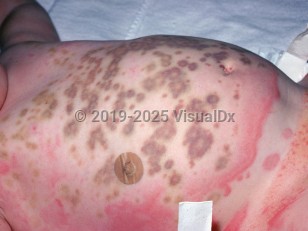Serum sickness-like reaction in Child
Alerts and Notices
Important News & Links
Synopsis

Eosinophilia may be present, but unlike true serum sickness, immune complexes, hypocomplementemia, and vasculitis are not found. Most reactions are mild and self-limited and resolve within several days to weeks after drug withdrawal.
Antibiotics, particularly cefaclor, penicillins, and sulfonamides, NSAIDs, allopurinol, propranolol, and carbamazepine are among the most frequent offenders.
In a retrospective study of 83 pediatric SSLR patients, amoxicillin was the trigger in 82.7% of cases.
Codes
T80.69XA – Other serum reaction due to other serum, initial encounter
SNOMEDCT:
403608009 – Serum sickness caused by drug
T50.905A – Adverse effect of unspecified drugs, medicaments and biological substances, initial encounter
Look For
Subscription Required
Diagnostic Pearls
Subscription Required
Differential Diagnosis & Pitfalls

Subscription Required
Best Tests
Subscription Required
Management Pearls
Subscription Required
Therapy
Subscription Required
Drug Reaction Data
Subscription Required
References
Subscription Required
Last Updated:08/04/2025

